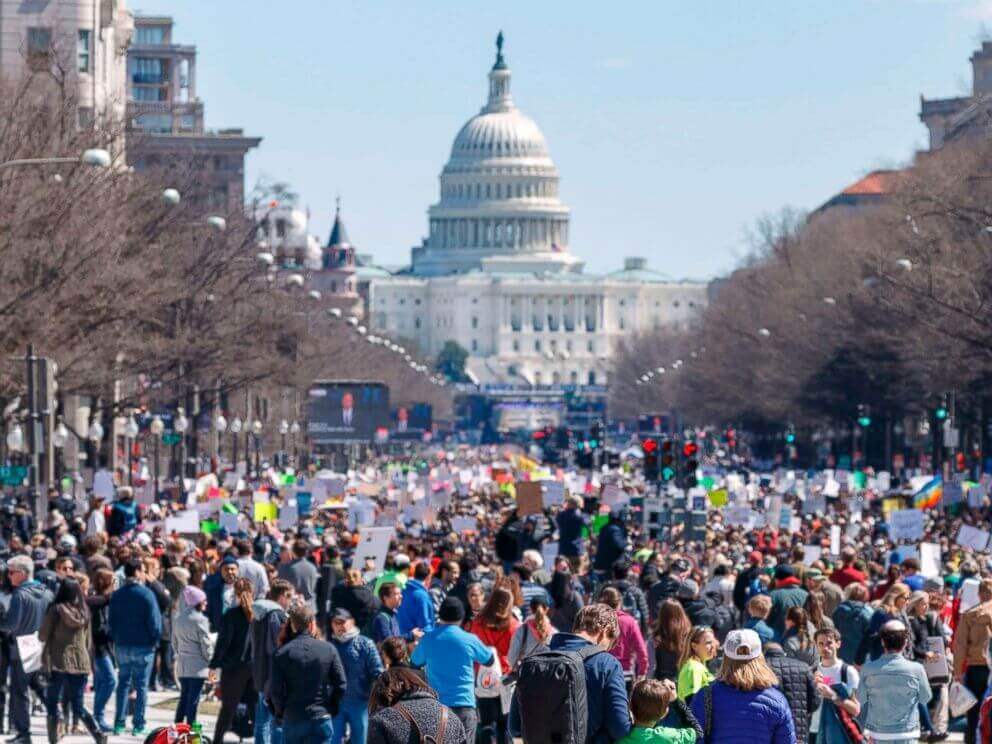In the wake of the Stoneman Douglas High School shootings in Parkland FL, this past month has seen a swell of youth activism – from demonstrations and marches around the country, to a national school walk out. Their voices have been in the media, on the news; their actions have sparked changes in gun sale restrictions at several large stores and even pressured congress to discuss making initial changes in gun control laws.
We live in a society that purports to care for its children, yet every day adults make decisions that affect the lives of children and future generations without including their voices. We make decisions about the environment, about how to use resources, about the purchase and sale of weapons, and more. Children are one of the last (human) frontiers in participatory democracy. Laws against child abuse and child labor in the US and other countries protect children in important ways, but their voices are rarely heard or included in the functioning of modern society.

As educators, a central part of our vocation is not simply to impart knowledge or share information, but to inspire and empower youth to learn and think for themselves. Mindfulness practice can play a key role in that process.
“The mind is not a vessel to be filled but a fire to be kindled.” — Plutarch
It’s easy to equate mindfulness practice with passivity. After all, most formal mindfulness exercises entail sitting still with eyes closed, face blank, the attention turned inwards. Yet the aim of such techniques is to develop a strong and clear awareness, independent of our biases and preconceived notions, that allows us to act boldly when needed. Mindfulness practice is about learning to see for oneself what’s true in our direct, human experience, instead of taking another person’s word for it. What are emotions? How do they function? How much power do we give our thoughts? How does it feel to be generous and kind versus stingy and cruel?
If you’re sharing mindfulness with kids, it’s essential to understand that, at its heart, this practice is meant to empower people. Cultivating awareness gives us the capacity to see more clearly and therefore to make conscious choices based on our values, regardless of our age. Without awareness, we are likely to act unconsciously out of habit, fear, or self-centeredness.
This kind of independent, courageous awareness needs to be fostered. When you practice mindfulness, notice when and how habitual ways of relating to yourself, others, or the world creep in. Step back and acknowledge that the mind is caught in some pattern. Can you come back to the moment with a fresh perspective and an open mind? Can you continually let go of ingrained ways of thinking and being and meet this moment as an unknown mystery?
When you teach mindfulness to children and youth, encourage them to explore their inner life in a radical way. Catch their interest with a question, a problem, or an outrageous notion. Where do our thoughts go all day long? What would our world be like if everyone were more aware of their thoughts and assumptions? What if you could train your mind to be quiet and focus whenever you wanted?
As awareness grows, the aim is to apply that clarity to our lives – personally and collectively. Just as mindfulness invites a deep exploration of our inner world, it makes possible an radical exploration of the outer world. Encourage your students to examine things with a critical eye and question the structures of the world in which we live. Engage them in conversation about the world they’d like to create. How might things work differently? How can we empower them today to take steps in that direction?
 Share with your community!
Share with your community!
Ask your students to reflect critically about the world they live in and the world they’d like to create. How might things work differently? Share with fellow teachers in your school or on social media with #mindfulschools.
 Share with your community!
Share with your community!